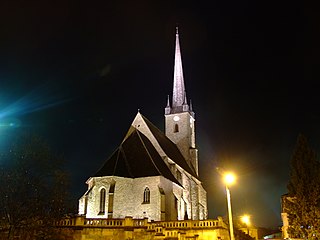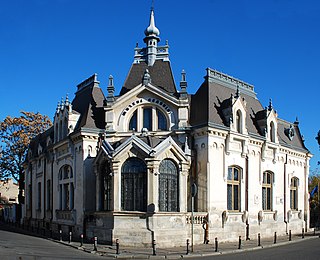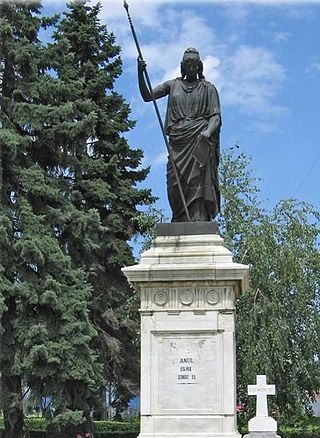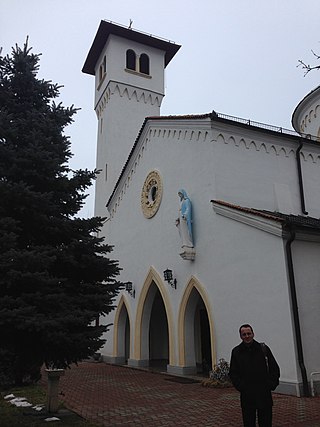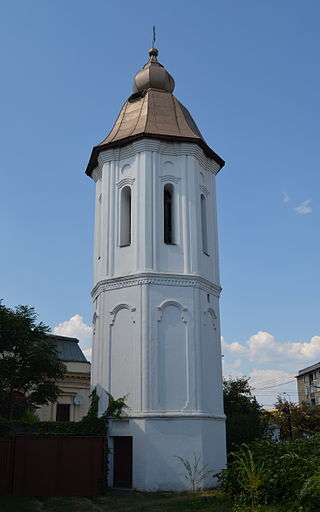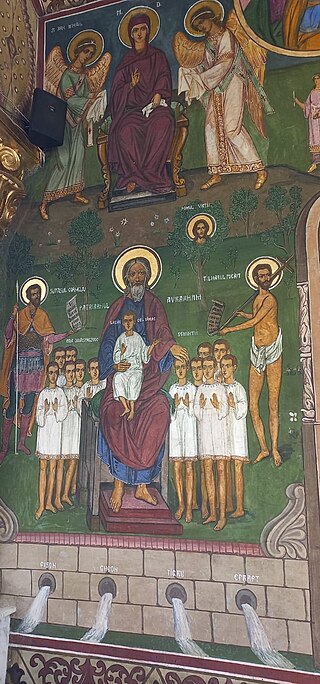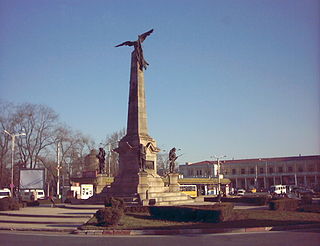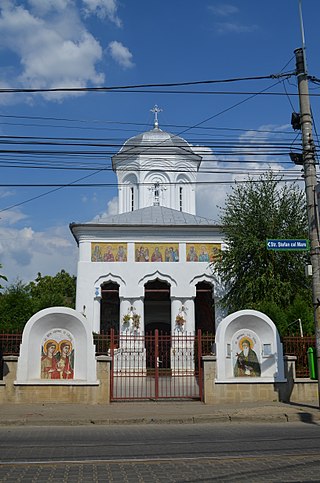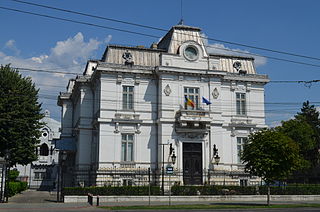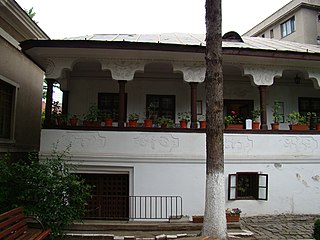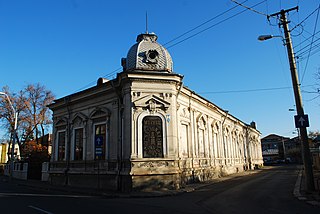14 Sights in Ploiești, Romania (with Map and Images)
Legend
Welcome to your journey through the most beautiful sights in Ploiești, Romania! Whether you want to discover the city's historical treasures or experience its modern highlights, you'll find everything your heart desires here. Be inspired by our selection and plan your unforgettable adventure in Ploiești. Dive into the diversity of this fascinating city and discover everything it has to offer.
Sightseeing Tours in Ploiești1. Biserica Reformată
The Reformed Church in Romania is a Calvinist denomination and the largest Protestant church in Romania. The majority of its followers are of Hungarian ethnicity and Hungarian is the main church language. The large majority of the Church's parishes are in Transylvania; according to the 2021 census, 495,380 people or 2.6% of the total population belong to the Reformed Church. About 95% of the members were of Hungarian ethnicity.
2. Nicolae Simache Clock Museum
The "Nicolae Simache" Clock Museum is a county museum in Ploieşti, Romania. Organized on the initiative of Professor N. I. Simache, as a section of the History Museum, it dates back to 1963. It was first installed in a hall in the Palace of Culture, until, through acquisitions, it acquired such a rich heritage that it needed its own premises. The Luca Elefterscu House was then made available to him, which was adapted to the new purpose; The arrangement works were completed in 1971 and the museum opened in January 1972.
3. Statuia Libertății
The Statue of Liberty is one of the oldest statues in Ploiesti. It has been declared a historical monument and is inscribed in the List of Historical Monuments with code LMI PH-III-m-A-16868 under the name Statue of Liberty.
Wikipedia: Statuia Libertății din Ploiești (RO), Heritage Website
4. Catedrala Sfântul Ioan Botezătorul

The Cathedral of Saint John the Baptist, located on Republicii Boulevard no. 12, is the most imposing church in Ploiesti and one of the main architectural landmarks of the municipality. The cathedral's bell tower is included on the list of historical monuments in Prahova County with the code number LMI PH-II-m-A-16261.
Wikipedia: Catedrala Sfântul Ioan Botezătorul din Ploiești (RO)
5. Biserica Romano Catolică Cristos Rege
The "Christ, King" Church in Ploiesti is a Roman Catholic place of worship located in Stefan cel Mare Street no. 13, which serves as a parish church within the Roman Catholic Archdiocese of Bucharest.
6. Biserica „Sfântul Gheorghe” - Vechi
The "Saint George" - Old Church is a Romanian Orthodox church located in the central area of Ploiesti in Romania, on Independence Boulevard, which connects the central square of the city to the South Railway Station. It is known for its bell tower, classified as a historical monument and dating from 1830–1831, although the church itself has been demolished and rebuilt since then, no longer retaining any aspect that would give it the status of a monument building.
Wikipedia: Biserica „Sfântul Gheorghe” - Vechi din Ploiești (RO)
7. Gara Ploiești Nord
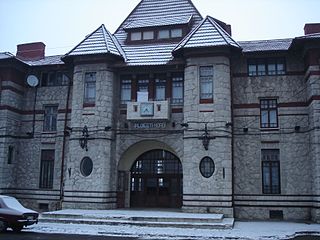
Gara Ploiești Nord is a railway station located in the northern part of Ploiesti, on the Ploiesti Sud-Măneciu railway. It was built in 1919, now being classified in the List of Historical Monuments in Romania.
8. Casa de Cultură a Sindicatelor din Ploiești
The work, designed in May 1968, was executed according to the plans of the architect Gheorghe Dorin by T.C.M. Prahova, and was completed in May 1972. It has hosted numerous political or cultural meetings, symposia and conferences, performances, patronizes the "Chindia" Folklore Ensemble, the "Pastel" Plastic Circle, activated the "Ioan Cristu Danielescu" Choir, literary and ballet circles, etc.
Wikipedia: Casa de Cultură a Sindicatelor din Ploiești (RO), Website
9. Biserica Maica Precista
The Mother Precista Church in Ploiesti is dedicated to the "Assumption of the Virgin Mary" and is one of the most important religious, historical and art monuments in Prahova County, belonging to the local and national heritage. It has more than three centuries of existence and is located at the intersection of Armoniei, Artei and Mihai Bravul streets.
10. Monumentul Vânătorilor din Războiul de Independență
The Hunters' Monument was built in honor of the people of Prahova from the 2nd Hunters' Battalion, which contributed decisively to the first great Romanian victory in the War of Independence, the attack on Grivița.
11. Biserica Sfinţii Voievozi
The Church of the Holy Voievozi in Ploiești has its name from the first dedication of the Church, from 1628, and from the data existing in the archive it is believed to be the second church in the city of Ploiești, after the royal church. Before the present parish church there was a church built of wooden beams, from 1648, but in 1711 the building of the current church began, ending in 1720. The church preserves the Brancovan style as an architecture, being a historical monument of architecture. Between 2000 and 2005, consolidation works, capital repairs were carried out, the old painting was removed, because it had no heritage value, and a new painting was made between 2002 and 2005, in the fresco technique.
Wikipedia: Biserica Sfinții Voevozi din Ploiești (RO), Website
12. Ion Ionescu-Quintus Prahova County Art Museum
The Prahova County Museum of Art "Ion Ionescu-Quintus" is a county museum in Ploiesti, located in Independenței Blvd. no. 1. Housed in a recently restored historical monument building, the museum holds valuable works of Romanian fine art; Graphics. From 1929 to 1956 it functioned under the name of the Pinacoteca of the city of Ploiești.
Wikipedia: Muzeul Județean de Artă Prahova „Ion Ionescu-Quintus” (RO), Website, Heritage Website
13. Ion Luca Caragiale Museum
The "Ion Luca Caragiale" Museum is a county museum in Ploiești, located in Str. Kutuzov no. 1. Ion Luca Caragiale was born on January 30, 1852 in the village of Haimanale, near Ploiești, Prahova county. The primary classes and the gymnasium graduated in Ploiești, and between 1868 and 1870, he attended the declaration and mimic courses at the Conservatory of Bucharest, Costache Caragiale. Between 1870 and 1872, he was a copyist at the Prahova Tribunal, then a soul and a copyist at the National Theater in Bucharest. He debuted in the press of the time in the satirical magazine "Ghimpele" (1873), where he signed different chronicles, and between 1876 - 1877, he was a corrector to "Democratic Union" - the newspaper of the group of liberals of the same name -, drafted entirely The humorous magazine "Clapon" and removed the newspaper "Romanian Nation". On May 26, 1877, he began to attend the Bucharest meetings of the "Junimii", in which he will read his comedies. Also during this time he collaborated in the newspaper "Timpul" together with Mihai Eminescu and Ioan Slavici, but also to other magazines. After the withdrawal from the newspaper "Timpul" was a school reviewer in Suceava and Neamț counties, during which he met Veronica Micle, Eminescu's friend. In 1893 he edited with Anton Bacalbașa Humoristic Magazine "Moftul Român", and in 1894, the magazine "Vatra", together with Ioan Slavici and George Coșbuc. In addition to the advertising activity, Caragiale also carried out an intense literary activity, proving to be fully, is and will be the greatest playwright of Romanian literature, his four comedies, "a stormy night" (1879), "Conu Leonida in front of the reaction "(1880)," a lost letter "(1884)," Carnavalului "(1885) and the drama" Şăastasta "(1890), being published in a relatively short period. Starting with 1897, Caragiale will "betray" the theater and publish short prose, volumes of sketches and novels: "sketches" (1897), "moments" (1901), "Moments, sketches" (1910) and "Sketch Nine ”(1910), in which a satirical comic approaches. Some of the novels are at the confluence of the comic with the tragic, and others, although psychological, are influenced by naturalism, or make room for the fantastic. In his entire work, I.L. Caragiale has managed to outline as no other writer, a comic universe and another tragic, illustrated by both dramatic and prose works, but his greatest merit is that he knew how to show artistically. a complex realized and to paint human types of great diversity. In the memory of the great playwright, in 1979, in a house built in rustic style, located on the national road Târgoviște-Ploiești opened the Memorial Museum I.L. Caragiale, which illustrates through an impressive collection the main moments of the writer's life and work: the family from which he descends and from which he inherited the passion for theater, the school years in Ploiești, the debut in the newspaper and the main publications he collaborated. affirmation in theater and prose.
14. National Museum of Oil
The National Petroleum Museum in Ploiesti was inaugurated on October 8, 1961, as a result of the celebration of the centenary of the Romanian oil industry, in 1857. It is among the only museums of its kind in the country and in Europe. Hosted by a beautiful edifice that allowed the arrangement of some rooms and with a courtyard that was transformed into an open-air exhibition. The museum's patrimony has grown from 800 pieces in 1961 to over 8,000 in 1994.
Share
How likely are you to recommend us?
Disclaimer Please be aware of your surroundings and do not enter private property. We are not liable for any damages that occur during the tours.
